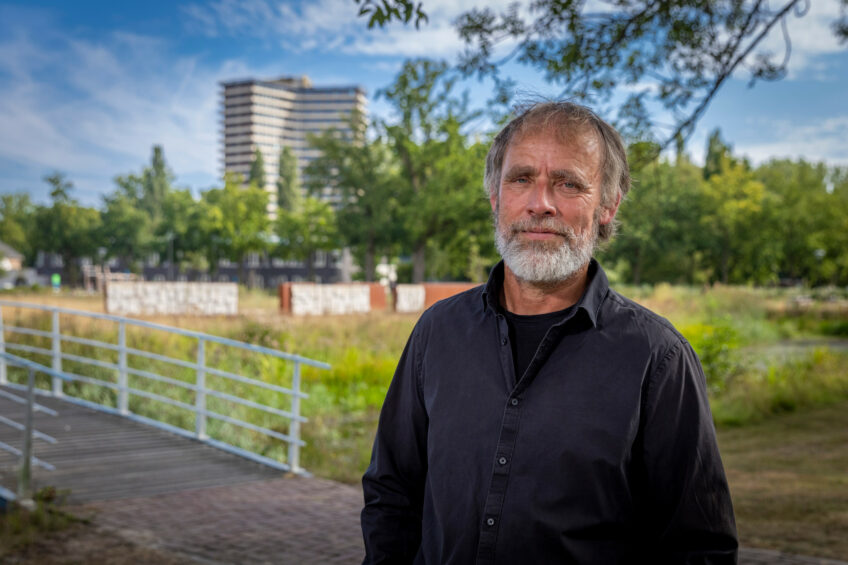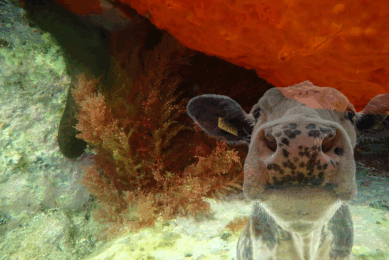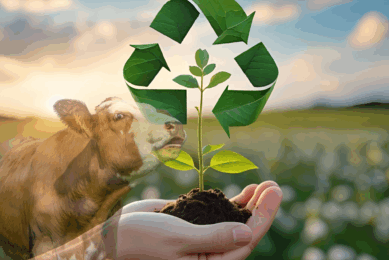Achieving methane targets: Feed additives indispensable

Climate neutral cows. Is that possible? New insights are encouraging. Feed in particular appears to be a promising route. In a conversation with Jan Dijkstra of Wageningen UR, he shares his views: “Halving methane emissions is certainly feasible.” And feed additives are indispensable to achieve this.
Can a cow become climate neutral?
Not so long ago, scientists’ answer to that question was short and clear: ‘no’. Methane production in the rumen was a problem that would never be solved. Methane, a potent greenhouse gas, was seen as an unavoidable byproduct of ruminants.
But times are changing. Research moves fast, and insights have changed. Efforts are being made on all sides to reduce methane emissions: through breeding, management and especially through feed. There is now a lot of knowledge about low-methane rations and the effects of feed additives. More and more of the latter are appearing on the market. For example, Agrifirm launched the Anavrin product at Eurotier, together with a Swiss-Italian partner.
Jan Dijkstra is the expert in this field at Wageningen UR. High time to ask him a few burning questions about the effect of feed additives and the chances of methane-free milk production.
Dijkstra: “There are hardly any scientific publications available for this new product, making it difficult to assess the manufacturer’s claims. But the principle is known. Certain tannins are known to reduce methane emissions. They inhibit protozoa in the rumen. These are microorganisms that live together with methane-producing microbes and suppress beneficial bacteria. Those tannins also promote nitrogen efficiency. In addition, they increase the production of propionic acid, a fatty acid that is beneficial for milk production. This produces less hydrogen, which is beneficial. The product also contains volatile oils that also promote the formation of propionic acid. What is new is that these substances are used in combination in one product. An increase in milk production is theoretically possible, but as mentioned, I cannot properly assess this.”
…by 2050 the cow must emit 40 to 50% less methane…”

“You also have Bovaer and SilvAir, the latter with nitrate as the active ingredient. Its effect has been scientifically proven. You also have red seaweed, with bromoform as the active component. This also prevents methane formation, although it also has disadvantages. For example, seaweed also contains other substances such as iodine, which is harmful in excess. Bromoform is therefore extracted from the seaweed and processed into additives. But this substance itself also poses significant risks to animal health, as well as to the environment. The first condition for such a product is that animal health does not suffer.”
“If you want to reduce methane emissions through feed, you can follow 2 paths. The first is to optimise the basic ration and the second is to use an additive. A reduction of 10 to 20% is often possible via the first track and sometimes even more. Parts of this strategy are: more fat in the ration, more silage maize silage and highly digestible young grass of high quality. Old grass with low digestibility, such as late-mown natural grass, produces much more methane. The great thing is that targeting nitrogen efficiency and targeting methane reduction go well together, provided you adjust your ration. The protein/energy ratio is of great importance.
The second track is the additive. With the additive Bovaer you can achieve approximately 25% reduction on an average ration in the Netherlands. In Flanders and Denmark the basic ration is different, I estimate that around 30% reduction is possible there.
The goals that apply until 2030 are in many cases achievable with one of the 2 strategies. But by 2050 the cow must emit 40 to 50% less methane and you really need to implement the strategies for this. From 2030, methane-reducing additives will therefore become indispensable. It is not yet clear whether different additives can be used side by side and what the additional effect is.”
“Grass is indeed good at capturing organic matter. But a lot is also possible with modern corn cultivation. With catch crops, fertilising in the row and no-tillage you can maintain the organic matter content. And corn supplies a third more dry matter per hectare than grass.”
“A promising new direction is directly influencing the microbiome, the bacteria in the rumen. The composition of that microbiome is very decisive for methane formation. The idea now is to transfer rumen fluid from a cow that produces little methane to the rumen of a young calf, so that a favourable microbiome is created there. Research is being done into this.
And another route is breeding. Breeding organisations are working on this.”
I don’t think a methane-free dairy cow is feasible. Right now I think the limit is somewhere around a 50% reduction, maybe a little more.“
“In beef cattle production, the figures for the use of seaweed are already approaching a 70 to 80% methane reduction without visible health problems. But in dairy cattle you eventually get adverse effects due to the bromoform in the seaweed.
I don’t think a methane-free dairy cow is feasible. Right now I think the limit is somewhere around a 50% reduction, maybe a little more. That is not zero, but it is sufficient to stop global warming, insofar as methane plays a role in it. Methane breaks down in the atmosphere, unlike carbon dioxide. If we reduce total methane emissions by half, emissions and degradation will be in balance and the methane blanket will not become thicker. To achieve this, other sources of methane must emit at least half as much. But if that works, you will still end up with that climate-neutral cow when it comes to methane.”











